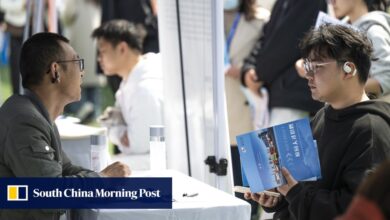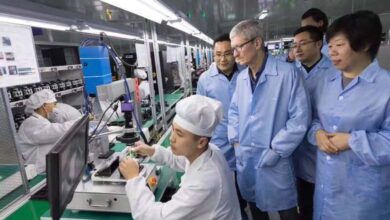China, US middle classes a crucial link in relationship chain, analyst argues

China’s middle class is a group to which the country’s policymakers should be paying close attention, a prominent political scientist has said – both in terms of the demographic’s traditional role as a predictor of economic prosperity, and as a potential factor in helping preserve frayed relations with the United States.
“We should promote the view that a stronger Chinese middle class is beneficial for the US middle class,” said Li Cheng, a politics professor at the University of Hong Kong, at a Saturday event in Beijing promoting the launch of his book.
“China’s middle class has not only transformed the country’s economy, but the world’s,” said Li, arguing global markets’ demand for goods – the US foremost among them – helped drive China’s economic growth and aided the country as it journeyed out of poverty.
Li cited the US’ recent issues with inflation as one area in which a healthy trade relationship with China could be helpful, appealing to a once-common view that strong ties are mutually beneficial. “Why can’t the US see China’s growing middle-class population as an opportunity to solve its [own] problems, instead of a challenge?”
But Li was not as pessimistic as those in his field predicting an indefinite stay in the middle-income club, saying “as long as there is no war, the middle class can still grow.” The scholar is in Beijing this week to launch the Chinese version of his book, Middle Class Shanghai: Reshaping US-China Engagement.
The book was initially published in English in May 2021, when Li was a senior fellow at the Brookings Institution think tank in Washington DC. He began his current role last year, joining the University of Hong Kong as a professor and founding director of the Centre on Contemporary China and the World.
Li, well-known in academic and policy circles, noted the middle class is an important economic bellwether as their consumption drives growth, and the expansion of this group will be highly determinant in whether the country can meet its development goals.
Though there is no official definition of what constitutes such an income, a “middle-income group” is used as a unit of classification by the National Bureau of Statistics, used to describe a three-person household earning between 100,000 yuan (US$13,966) and 500,000 yuan a year.
While Li said he is still optimistic China would reach this target, he noted “significant changes” have taken place for the middle-class population in the three years since the book was first published, their “mood” being one of the most drastic.
“But this anxiety goes beyond finances and investment. It is also observed in areas such as career development, health and medical care, food safety, education and elderly care.”
China is currently categorised as an upper-middle income country by the World Bank. With a gross national income of US$12,597 per capita last year, China was more than US$1,000 behind the threshold for high-income countries.
Li also predicted more challenges for China to come, particularly in its dealings with the US, as both major party candidates for this November’s presidential election are all but certain to continue previous policies of containment.
However, were Republican Party candidate Donald Trump to win a second stay in the White House, Li said the prospects would be “extremely bad” for bilateral relations.
To guard against this no-win scenario, he added, China should stay “more open, more focused on the economy and more confident”.
Source link




